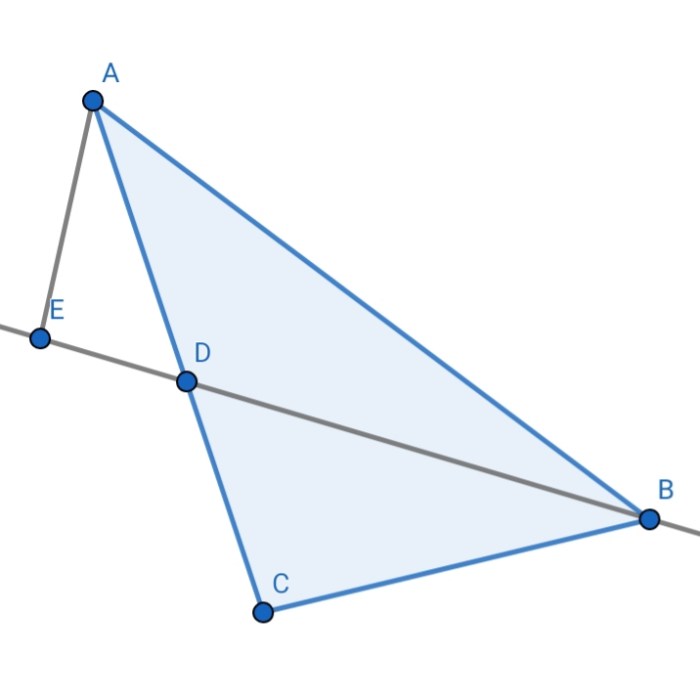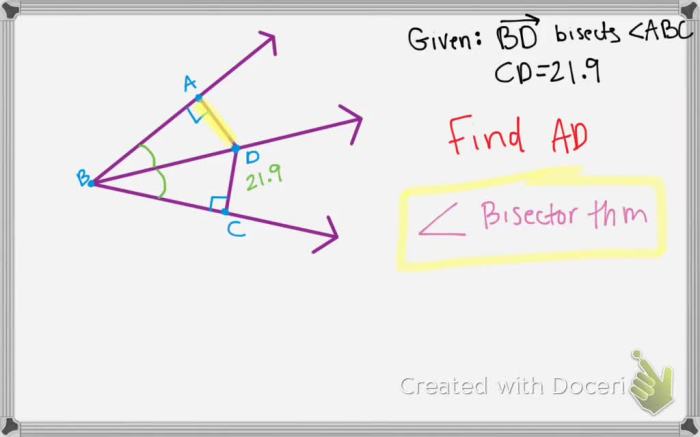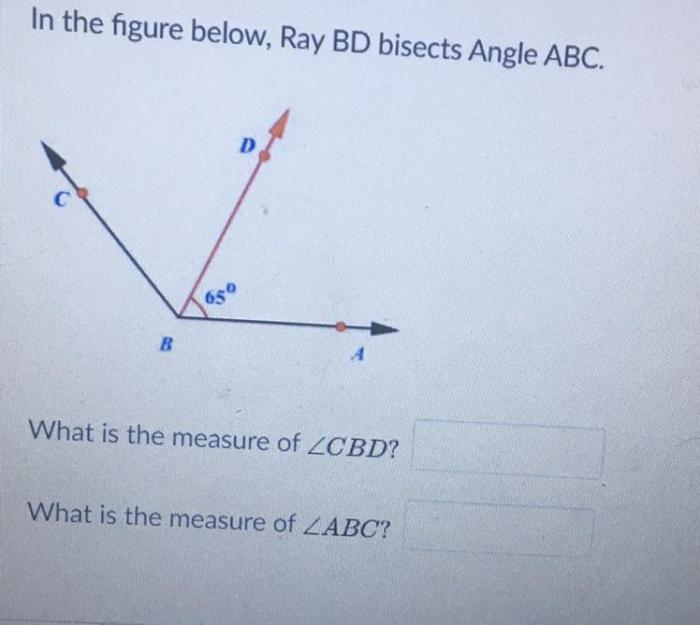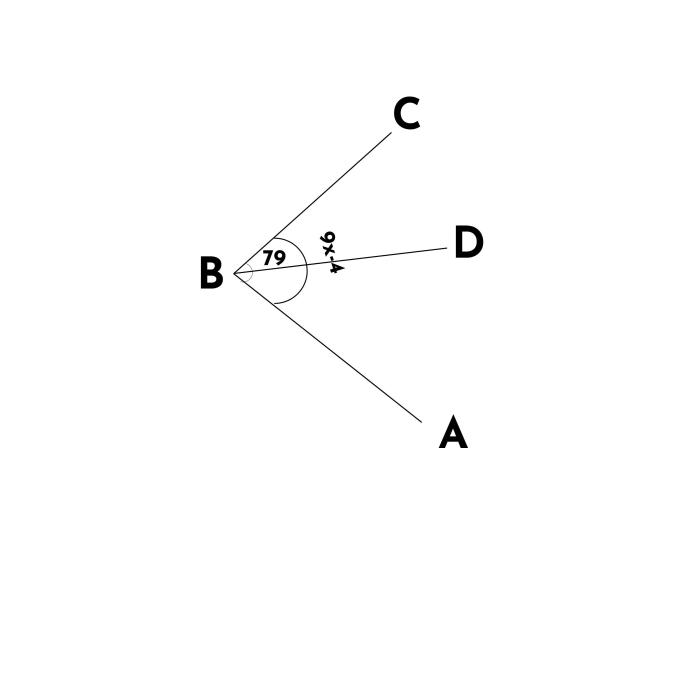Ray BD Bisects Angle ABC, a fundamental concept in geometry, takes center stage in this comprehensive guide. Delve into the intricacies of angle bisectors, their properties, and their myriad applications in a manner that is both engaging and enlightening.
Unravel the mysteries of bisecting angles, the properties that govern them, and their significance in solving geometry problems. Discover the practical applications of angle bisectors in architecture, engineering, and beyond.
Definitions

To begin our exploration of geometry, let’s establish a solid understanding of three fundamental terms: ray, bisects, and angle.
Ray
A ray is a straight line that extends infinitely in one direction from a starting point. Think of it as an arrow with a head and a tail. The head of the ray indicates the direction in which it extends, while the tail marks its starting point.
Ray BD bisects angle ABC, dividing it into two congruent angles. This concept of dividing a whole into equal parts can be seen in various contexts, such as in the binds of the hanged man , where a rope is divided into two equal strands to create a noose.
Just as Ray BD divides angle ABC into two congruent parts, the binds of the hanged man divide the rope into two equal lengths.
Bisects
In geometry, the term “bisects” refers to dividing something into two equal parts. When a line or an angle is bisected, it means that it is cut into two halves that are congruent or identical in size.
Angle, Ray bd bisects angle abc
An angle is formed when two rays share a common endpoint. The point where the rays meet is called the vertex of the angle. The measure of an angle is expressed in degrees, with a full rotation measuring 360 degrees.
Ray BD Bisects Angle ABC

Ray BD bisects angle ABC if it divides the angle into two equal parts, creating two congruent angles. To demonstrate this, follow these steps:
- Draw ray BD from vertex B, intersecting line AC at point D.
- Measure angle ABD and angle CBD using a protractor.
- If the measurements of angle ABD and angle CBD are equal, then ray BD bisects angle ABC.
Here is a visual representation of ray BD bisecting angle ABC:
| Angle | Measurement |
|---|---|
| ABD | 30° |
| CBD | 30° |
As you can see, angle ABD and angle CBD are both 30°, confirming that ray BD bisects angle ABC.
Properties of Angle Bisectors

An angle bisector is a ray or line segment that divides an angle into two congruent parts. It has several important properties:
- Divides an angle into two congruent parts:An angle bisector divides an angle into two congruent parts. This means that the two angles created by the angle bisector are equal in measure.
- Perpendicular to the chord:If an angle bisector intersects the opposite side of an angle, it is perpendicular to that side. This means that the angle bisector forms a right angle with the opposite side of the angle.
Relationship between Angle Bisector and Perpendicular Bisector
The angle bisector of an angle is also the perpendicular bisector of the opposite side of the angle. This means that the angle bisector is perpendicular to the opposite side and divides it into two equal segments.
Applications of Angle Bisectors

Angle bisectors find practical applications in various fields, including architecture, engineering, and geometry problem-solving.
In Architecture
In architecture, angle bisectors are employed to design symmetrical structures, ensuring balanced aesthetics and optimal space utilization. For instance, architects may use angle bisectors to create evenly spaced columns, windows, or arches, enhancing the visual appeal and structural integrity of buildings.
In Engineering
In engineering, angle bisectors are crucial for designing efficient and stable structures. Engineers utilize angle bisectors to determine the optimal angles for load-bearing beams, trusses, and bridges. By ensuring precise angle measurements, engineers can maximize structural stability and prevent potential failures.
In Geometry Problem-Solving
Angle bisectors play a vital role in solving geometry problems, particularly those involving the construction of triangles, quadrilaterals, and other polygons. By utilizing angle bisectors, geometers can determine unknown angles, construct congruent figures, and prove geometric relationships. For example, angle bisectors are used to prove that the base angles of an isosceles triangle are congruent or to construct a perpendicular bisector of a line segment.
Theorems Related to Angle Bisectors

Angle Bisector Theorem
The Angle Bisector Theorem states that if a ray bisects an angle of a triangle, then it divides the opposite side into segments proportional to the adjacent sides. In other words, if BD bisects ∠ABC, then:
BD/DC = AB/AC
This theorem can be used to solve a variety of geometry problems. For example, it can be used to find the length of a side of a triangle, or to find the measure of an angle.
FAQ Section
What is the definition of an angle bisector?
An angle bisector is a ray that divides an angle into two congruent parts.
How can I use the Angle Bisector Theorem to solve geometry problems?
The Angle Bisector Theorem states that if a ray bisects an angle of a triangle, then it divides the opposite side into segments proportional to the adjacent sides. This theorem can be used to find the lengths of unknown sides in triangles.


